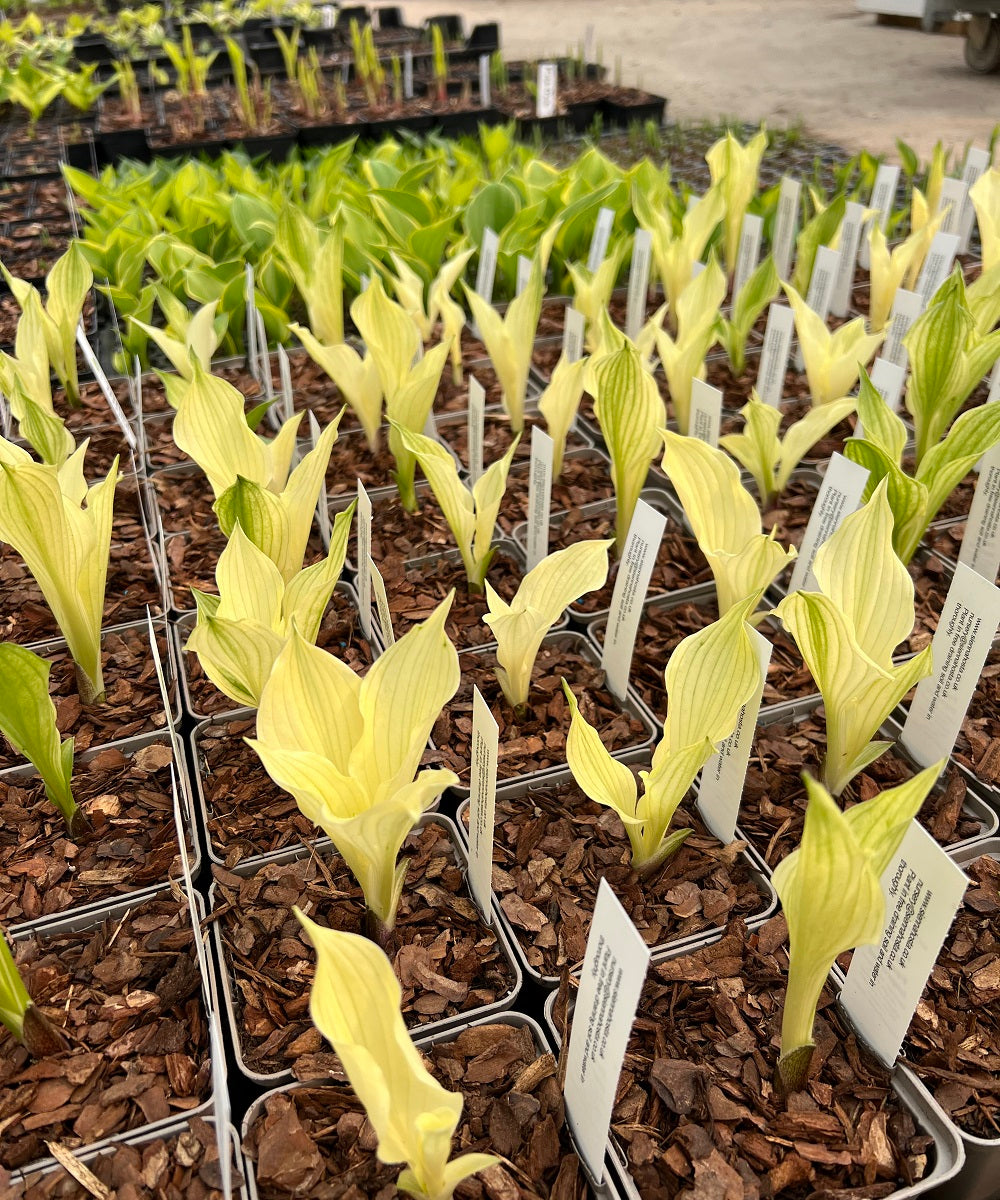
Few Hostas cause as much of a stir as Hosta 'White Feather'. With its striking ivory-white leaves unfurling in spring, it's one of those plants that instantly stops people in their tracks. Scroll through social media or browse any garden centre bench in May, and you'll likely see this ghostly beauty stealing the show.
But while 'White Feather' looks extraordinary, it's also one of the trickiest Hostas to grow well, and often disappoints those who don't know its quirks. So let's dig a little deeper into what makes 'White Feather' both fascinating and frustrating.
When 'White Feather' first emerges in spring, its leaves are a pure, creamy white, a rarity in the Hosta world. This dramatic colouring is the result of a lack of chlorophyll, the green pigment that allows plants to photosynthesise.
The effect is beautiful but short lived. As the season progresses, the leaves gradually develop green streaks and patches, usually starting from the veins. By midsummer, most plants will have turned a pale green or chartreuse, losing that ghostly appearance that made them so desirable in the first place.

The same feature that makes 'White Feather' so eye catching, its lack of chlorophyll, is also its greatest weakness. Without chlorophyll, the plant struggles to generate enough energy to sustain itself. This can make it slow growing, weak, and prone to problems that more robust Hostas shrug off.
Here are a few common issues growers face.

Despite all that, 'White Feather' remains a collector's favourite. It's easy to see why, it's unique, photogenic, and genuinely unusual. For plant enthusiasts who love something a bit different, it's a fun challenge. When grown well and protected, it' makes an incredible statement in a shady corner or container display early in the year.
For most gardeners, though, 'White Feather' is best appreciated as a novelty rather than a staple. If you're after a dependable white or pale variegated Hosta, there are far easier options that will give you a similar look without the headaches - think 'Night Before Christmas', 'Patriot' and 'Francee'.
'White Feather' is a Hosta for collectors, not for beginners. It's beautiful but fleeting, delicate but demanding. If you're happy to give it extra care, plenty of shade, moisture, and slug protection, it will reward you with ne of the most striking spring displays in the Hosta world.
But if you're after a hardy, reliable performer, there are dozens of greener, stronger varieties that will thrive with far less fuss.
Jane finch
December 14, 2025
Thank you for your article on ‘white feather’. I have one and have struggled with getting it to thrive we’re all my other hostas are doing well.
Now I know it’s not me, and will appreciate its fleeting beauty.
Out of interest, do you do gift vouchers?
Many thanks
Jane